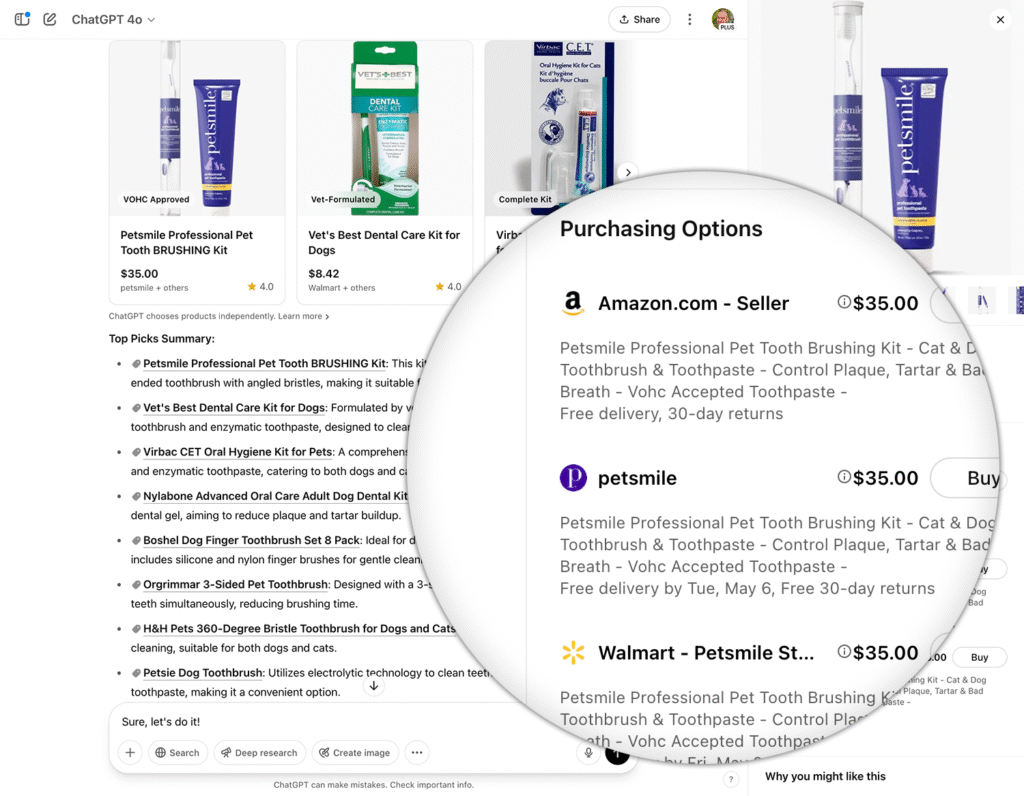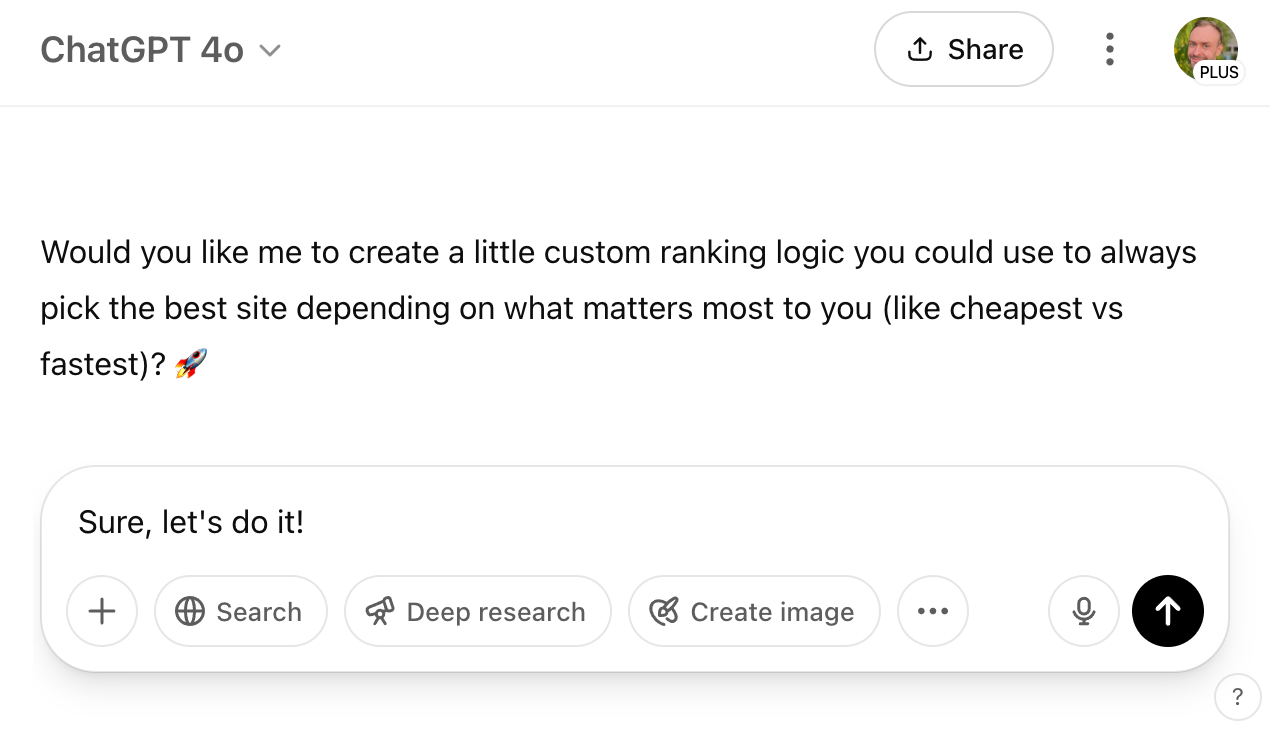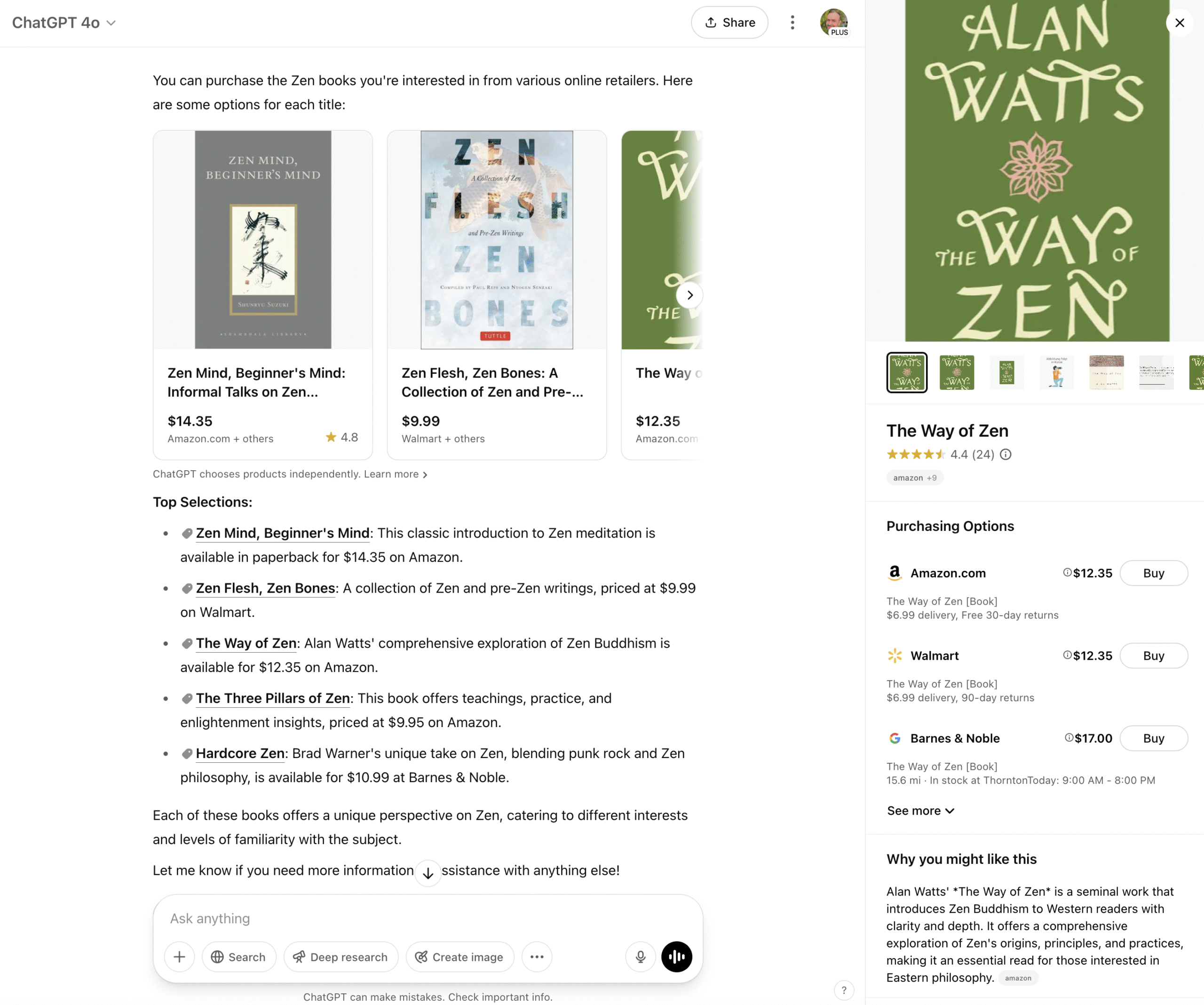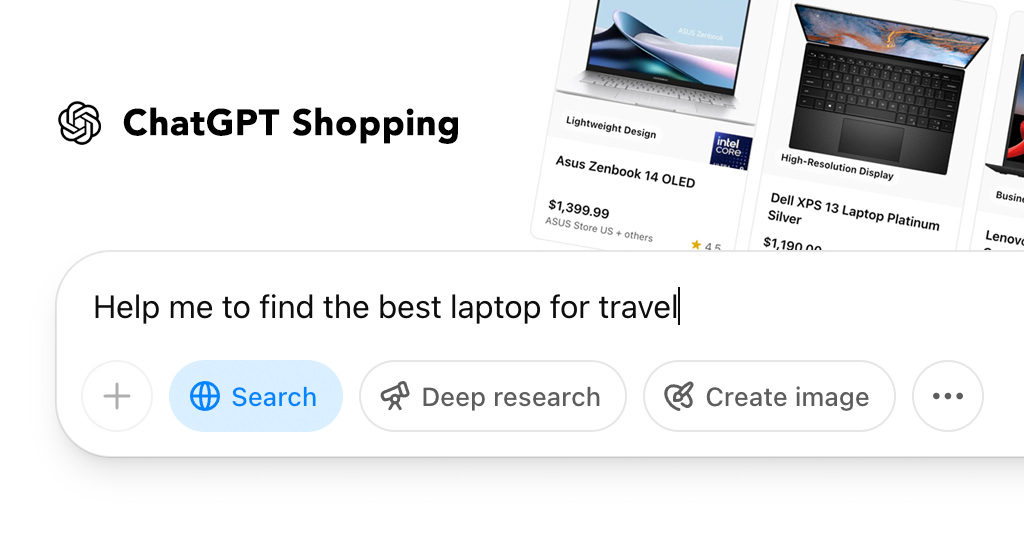ChatGPT Shopping is becoming a big competitor to Google Shopping. It’s changing how people find and choose where to buy products. Marketplaces like Amazon and Walmart will likely win here because OpenAI trusts them and they deliver products quickly. But with AI now playing a big role in what people see, brands will need to adapt — this shift brings both new challenges and new chances.
Here’s how it works: similar to Google Shopping, ChatGPT presents users with a list of buying options for a product. When you click “Buy,” you’re taken directly to the retailer’s website to complete the purchase. It’s not a full checkout experience within ChatGPT — at least not yet — but rather a smart product recommendation layer that redirects shoppers to trusted sellers.
OpenAI/ChatGPT Shopping SEO
How can you get a good ranking on ChatGPT Shopping?
Everything we knew before still matters — quality content and customer reviews remain at the top of the list. However, the new factor is how ChatGPT decides which store to recommend when a user asks where to buy a product.
I asked ChatGPT directly how it makes these decisions, and combined with some additional research, here’s a summary of the main factors it considers:
- Shipping Speed
- Stock Availability
- Return Policy
- Seller Reliability
- Customer Service Quality
- Website Trust and Security
- Loyalty Program Benefits
- Promotions or Coupons
- Product Authenticity Guarantee
- Convenience
- Popularity (how many people are buying from that site)
- User Reviews for the Website (not just for the product)
- Eco-Friendly Shipping Options (this matters to some users)
From my testing, if a product was available on Amazon or Walmart, they were almost always listed as the top options.
This suggests that Website Trust and Security carries a huge weight — and Amazon and Walmart are viewed by ChatGPT as the safest, most reliable places for shipping and purchasing.
Here is some more information directly from openAPI documentation on how the results are created.
Are We About to See More Marketplaces Pop Up? Known Brands Opening Doors to 3rd-Party Sellers?
Yet, Amazon and Walmart do not dominate the search results entirely — ChatGPT also gives a lot of visibility to other websites. Well-known brands like Chewy, PetSmart, and BestBuy frequently appear in the top three results. This could encourage more of these companies to open their own marketplaces, leveraging their trusted brand names to attract and convert traffic.
For smaller independent online stores, it will likely be very difficult to compete — at least for now. The world is still waiting to see how a potential deeper partnership between ChatGPT and Shopify could change the game, but as of now, big marketplaces dominate.

The Rise of Personalization
Another big shift is happening: personalization. During my experiments, ChatGPT offered to create a custom ranking logic based on my preferences:
“Would you like me to create a little custom ranking logic you could use to always pick the best site depending on what matters most to you (like cheapest vs fastest)? 🚀”

This changes everything.
Ranking will no longer be static. It will vary from user to user, depending on their individual preferences — cheaper, faster, best return policy, eco-friendly shipping, and so on.
This will create chaos for brands because they will lose a lot of control over rankings.
Instead of SEO strategies that target a broad audience, companies will now have to think about how to appeal to millions of individualized AI-driven buying decisions.
What’s Next?
Just like Google, ChatGPT is starting as an aggregator — but expansion is likely. Before creating its own marketplace, ChatGPT might add a universal shopping cart, letting users buy items from different stores with one checkout. Google tried this idea, and it would fit perfectly with ChatGPT’s goal to simplify shopping.
New Monetization Models on the Horizon?
If ChatGPT will most likely evolve from just recommending products to monetizing those recommendations (like affiliate links or promoted placements), it could reshape how brands think about advertising. Instead of bidding on Google Ads, brands might soon focus on optimizing for AI-driven placements — or even pay to influence ChatGPT results.
Ensuring Your Website Is Ready for ChatGPT Shopping
- To make sure your website and products can appear in ChatGPT’s shopping results, use structured data on your product pages, just like you would for Google Shopping. Include clear titles, descriptions, pricing, and availability using proper HTML metadata.
- Also, make sure your robots.txt file allows OpenAI to crawl your site — most websites already have this in place. A simple way is to allow access for all crawlers by including User-agent: * in your robots.txt, but talk to your developer to implement it correctly and double-check it’s working. Having clean and well-structured data helps ChatGPT understand and display your content accurately.
- OpenAI is exploring an easy way for merchants to provide product feeds directly to ChatGPT, helping ensure more accurate, up-to-date listings etc. You can sign up to be notified when feed submissions open. Complete the interest form, and we’ll notify you as soon as submissions open.

We’ll keep watching closely and share more updates as OpenAI moves further into eCommerce.
